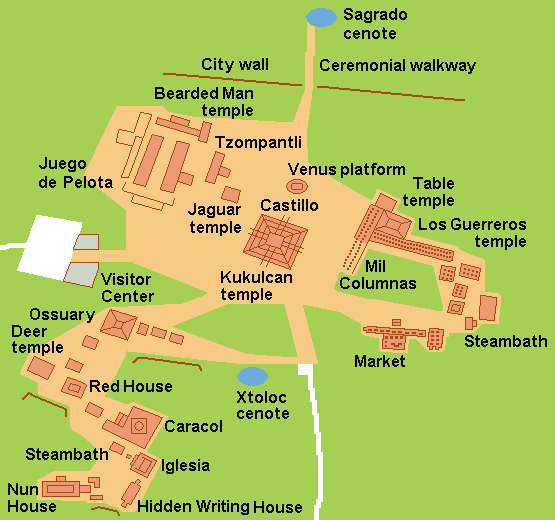78 Meso-American Civilization: Mayan
The Maya are an indigenous people of Mexico and Central America who have continuously inhabited the lands comprising modern-day Yucatan, Quintana Roo, Campeche, Tabasco, and Chiapas in Mexico and southward through Guatemala, Belize, El Salvador and Honduras. The designation Maya comes from the ancient Yucatan city of Mayapan, the last capital of a Maya Kingdom in the Post-Classic Period. The history of Mesoamerica is usually divided into specific periods which, taken together, reveal the development of culture in the region and, for the purposes of this definition, the emergence and cultivation of the Maya Civilization.[1]
Their civilization flourished from circa 1500 BCE to about 1500 CE, reaching its cultural and political height during the Classic Period (250–900 CE) in cities such as Chichen Itza, Palenque, Tikal, Copan, and Uxmal. The Maya are known for their advances in architecture, mathematics, astronomy, and their complex religious beliefs centered around cyclical life, the underworld Xibalba, and the paradise Tamoanchan. They were organized into independent city-states ruled by god-like kings, with a significant focus on lineage and political power. The Maya worldview deeply influenced their cultural achievements and social organization.[2]
The Classic Maya Period: 250-950 – This is the era which saw the consolidation of power in the great cities of the Yucatec Maya such as Chichen Itza and Uxmal. Direct cultural influences may be seen, in some sites, from the Olmecs and the Zapotecs and the cultural values of Teotihuacan and El Tajin but, in others, a wholly new culture seems to have emerged (such as at Chichen Itza where, though there is ample evidence of cultural borrowing, there is a significantly different style to the art and architecture). This period was the height of the Maya civilization in which they perfected mathematics, astronomy, architecture and the visual arts and also refined and perfected the calendar.[3]
The Post-Classic Period: 950-1524 – At this time the great cities of the Maya were abandoned. Thus far, no explanation for the mass exodus from the cities to outlying rural areas has been determined but climate change and over population have been strongly suggested among other possibilities. The Toltecs, a new tribe in the region, took over the vacant urban centers and re-populated them. At this time, Tula and Chichen-Itza became dominant cities in the region. The widely popular conception that the Maya were driven from their cities by the Spanish Conquest is erroneous as the cities were already vacant by the time of the Spanish invasion (in fact, the Spanish conquerors had no idea the natives they found in the region were responsible for the enormous complexes of the cities). The Quiche Maya were defeated at the Battle of Utatlan in 1524 and this date traditionally marks the end of the Maya Civilization.[4]

Maya Today: In the modern age the Maya still farm the same lands and travel the same rivers as their ancestors did from the north in the Yucatan down to Honduras. Though the region was Christianized in the 16th century conquest and inquisition, the old ways are still observed in a hybrid between European Catholicism and Mayan mysticism. The Daykeeper of a village still interprets the energy of a day and rituals are still performed in caves and on hills. On the island of Cozumel shrines to the Virgin Mary and the goddess Ixchel are interchangeable and, often, one and the same. [5]
- "Mayan Civilization" by Joshua J. Mark is licensed under CC BY NC-SA 4.0 ↵
- "Maya: Did you mean...?" powered by Perplexity AI is licensed CC BY NC-SA 4.0 by World History Encyclopedia ↵
- "Mayan Civilization" by Joshua J. Mark is licensed under CC BY NC-SA 4.0 ↵
- "Mayan Civilization" by Joshua J. Mark is licensed under CC BY NC-SA 4.0 ↵
- "Mayan Civilization" by Joshua J. Mark is licensed under CC BY NC-SA 4.0 ↵

